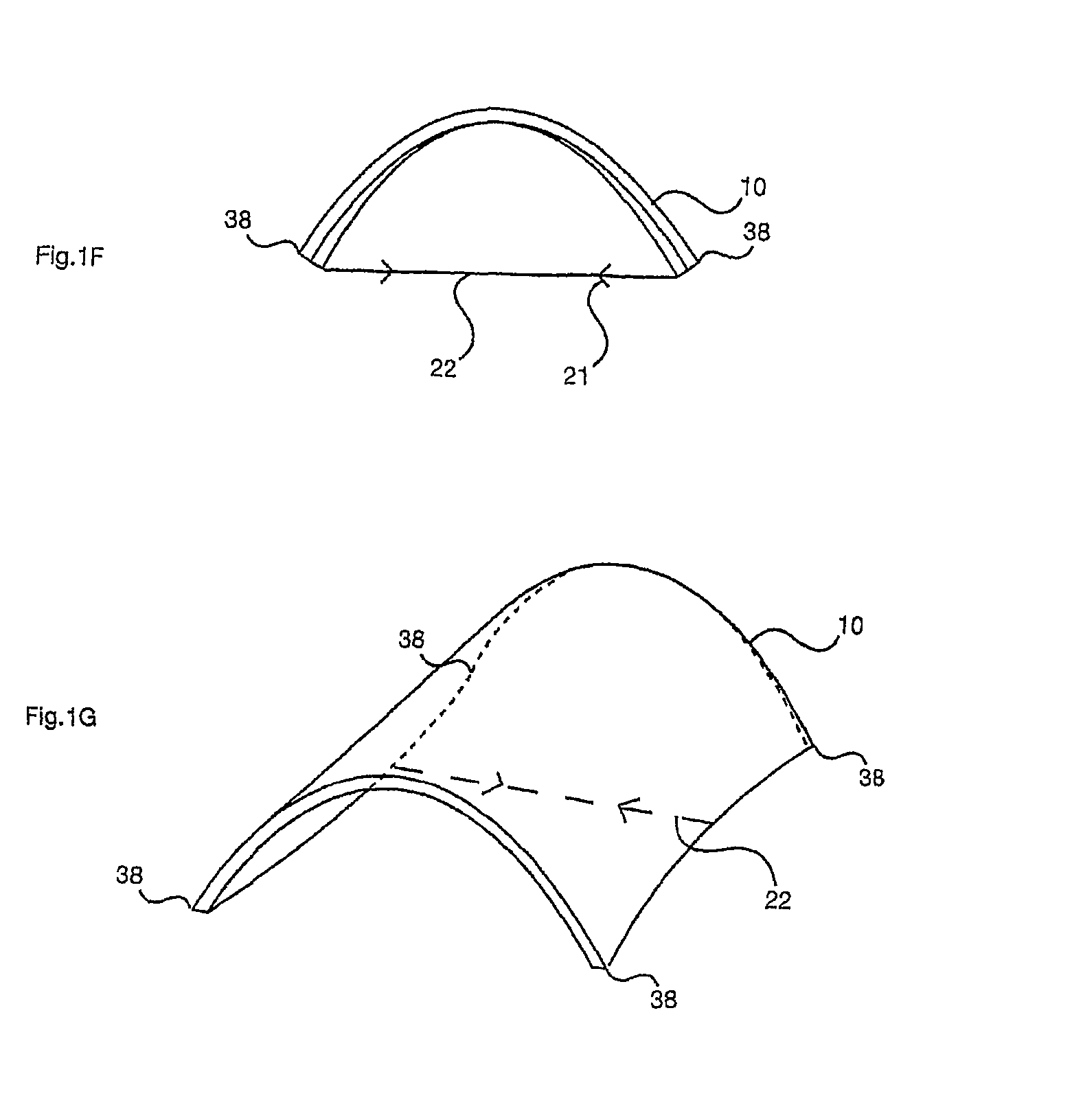Structural assembly with a tied, flexurally deformed panel
a technology of flexural deformation and structural assembly, which is applied in the direction of advertising, decoration, and application, can solve the problems of corrugated repose and reduction of any tension in the plane element, and achieve the effects of high coefficient of restitution, high load-bearing capability, and high in-plane tensile strength
- Summary
- Abstract
- Description
- Claims
- Application Information
AI Technical Summary
Benefits of technology
Problems solved by technology
Method used
Image
Examples
Embodiment Construction
[0270]FIGS. 1A-G illustrate panel 10, tied by a single tie rod 22. Panel 10 is shown on plan in FIG. 1A and in edge elevation in FIG. 1B before flexure, illustrated in FIG. 1C. FIG. 1D illustrates single linear tie rod or cable 22 (the arrow heads 21 indicating tensile force) and a diagrammatic perspective of the resultant temporary assembly is illustrated in FIG. 1E. FIG. 1F illustrates the secondary deflection of the corners of the panel 38 in elevation, which is also shown in perspective in FIG. 1G. Such an assembly may be used temporarily to create an “intermediate panel geometry” before attaching the membrane tie and linear connector or connectors. In the final “flexurally deformed geometry”, this secondary deflection or out-of-alignment is eliminated, a principle advantage of the invention.
[0271]FIGS. 2A-C are similar to FIGS. 1A-C and FIG. 2D illustrates a flexed, tied panel assembly 20 comprising a membrane tie 24, linear connectors 60 and panel 10, which is deformed into a ...
PUM
| Property | Measurement | Unit |
|---|---|---|
| thickness | aaaaa | aaaaa |
| thickness | aaaaa | aaaaa |
| tensile force | aaaaa | aaaaa |
Abstract
Description
Claims
Application Information
 Login to View More
Login to View More - R&D
- Intellectual Property
- Life Sciences
- Materials
- Tech Scout
- Unparalleled Data Quality
- Higher Quality Content
- 60% Fewer Hallucinations
Browse by: Latest US Patents, China's latest patents, Technical Efficacy Thesaurus, Application Domain, Technology Topic, Popular Technical Reports.
© 2025 PatSnap. All rights reserved.Legal|Privacy policy|Modern Slavery Act Transparency Statement|Sitemap|About US| Contact US: help@patsnap.com



